Begonias are a genus of tender, flowering perennials made up of more than 1,000 species. Foliage species are becoming increasingly desirable for pots and mixed borders. They come from subtropical and tropical areas of South America (Begonia luxurians, Begonia solananthera and Begonia maculata are all from Brazil), Southern Asia, from Nepal to Indo-China (Begonia hatacoa) and central to southern Africa (Begonia sutherlandii).
Jump to
How to grow begonias
Within the rhizomatous and cane type begonias, growing requirements – particularly with regard to levels of sun exposure – will vary. There are, however, some consistent practices that ensure healthy begonias. Growing foliage begonias in a pot couldn’t be easier, whether as part of an indoor display or for the summer on the doorstep or terrace.
When to plant begonias
The begonia season runs summer and late autumn before winter frosts and all year round as house plants. Begonias need a sheltered position with moist yet well-drained soil and will grow in semi shade and bright, indirect sunlight is preferred. They are tender perennials with hardiness ratings of RHS H1B to H2, and are suitable for gardens in USDA zones 10a-12. In a temperate climate, foliage begonias can be grown outside during the summer months, once the risk of frost is over.
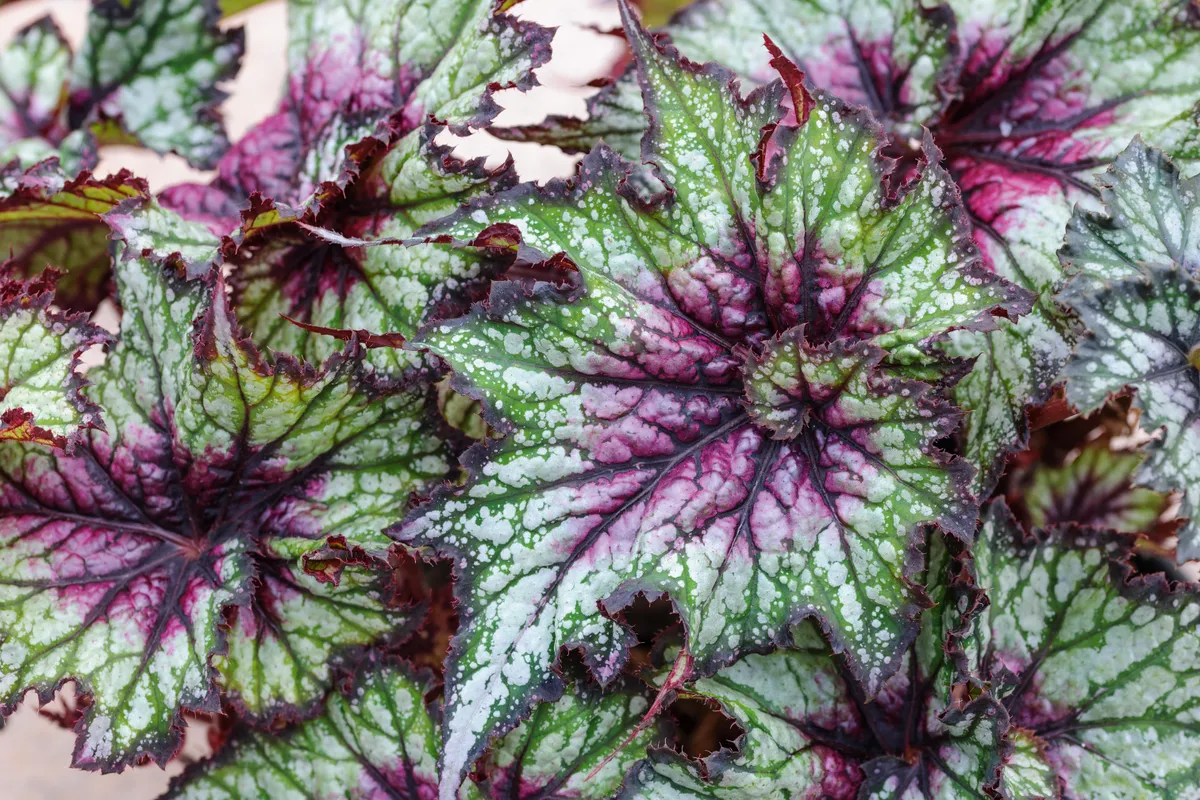
The best soil for begonias
The key begonia growing principle is: get the potting mix right at the start, and you’re unlikely to encounter many issues. Essentially, soil should be light and airy but rich with organic matter. Adding leaf mould or homemade compost to ordinary potting-on compost will give plants a good and lasting source of nutrients – they’re not big feeders, and so a nutritionally enriched growing medium supersedes frequent doses of fertiliser.
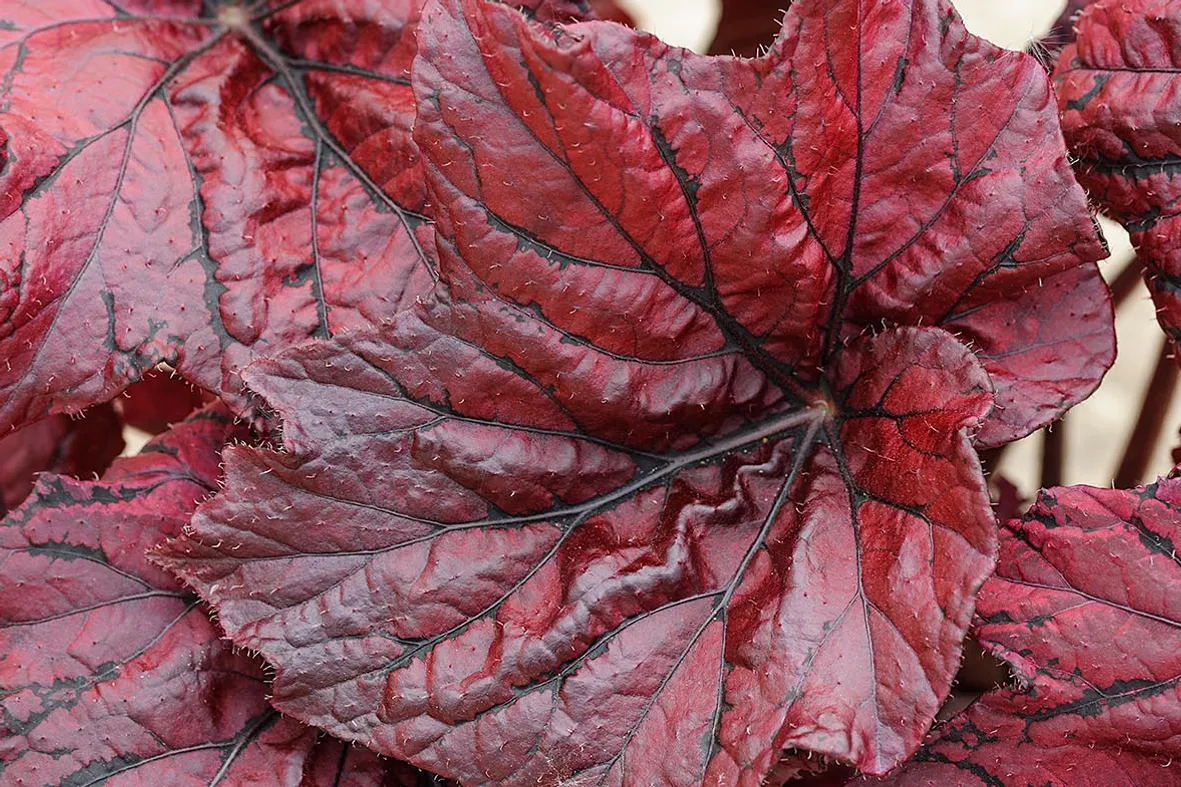
Mixing in vermiculite or grit will help with drainage, which is also very important. Begonias want to be moist but never drenched: water regularly, but allow the soil to dry out, at least in the top third of the pot, before replenishing. This will help prevent sciarid fly.
Begonia-diseases
Good hygiene will go a long way in helping begonias keep up appearances: snip away dead or diseased leaves, avoiding the build up of fungus, such as powdery mildew, which can affect begonias. You may find occasional crisping at the leaf edges with plants grown indoors. This is usually a sign that conditions are too dry – as is often the case in a domestic setting – and a little water misting may be necessary to replicate the humid conditions the plants are accustomed to.
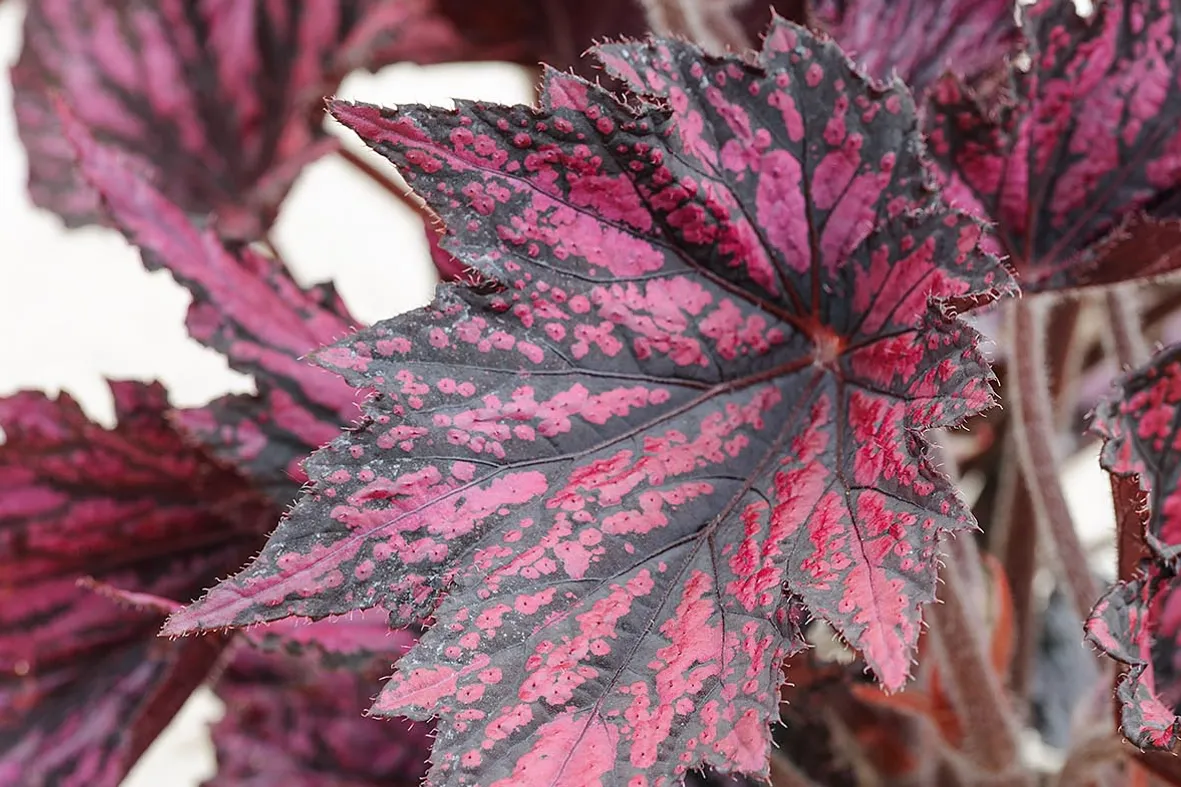
A good tip for house plant cultivation is to group plants together, rather than spacing them out across a room. The cosiness provides additional warmth and traps moisture when plants are watered.
How to care for begonias outdoors
Outdoors in the ground, aim for soil conditions similar to those in pots: by adding lots of drainage with, for example, horticultural grit to avoid water-logging, and plenty of incorporated organic matter, which in turn will help with aeration. Rhizomatous begonias can handle bright sunlight but perform well in semi shade, whether underplanting taller greenery, mixed into a burgeoning border or lining a narrow, well-trodden passageway where they will be enjoyed throughout the summer.

How to care for begonias over winter
Keep a close eye on weather forecasts and ensure begonia plants are lifted and brought indoors well before the first frost. This is the ideal time for a health check up and a general service: excess soil can be carefully washed from the roots and replaced afresh; spent or curling leaves should be chopped away and a good pot chosen for overwintering indoors. Repot no more than a couple of sizes larger than the rootball to avoid sitting water.
How to propagate begonias
Propagating begonias is wonderfully straightforward. The quickest and most effective method is by taking summer stem cuttings of between 3-5cm, and rooting them either in water or moist compost: no rooting powder necessary. Though not essential to growth, you can maintain humidity while plants are getting established by covering with a transparent container or polythene bag. Rooted cuttings can then be easily transferred and grown on in individual pots.
The best begonias to grow in your garden
Begonia ‘Red Tempest’

A tall, large-leaved Begonia rex that reaches up to a metre in height. Mottled, metallic swirls – with leaf veins painted dark green – lead to a deep central crimson patch that is mirrored dramatically at the leaf margins. 1m.
Begonia ‘Connee Boswell’

This cane begonia is grown for its deeply lobed, maple leaf outline and prominent maroon veins. This is a great foliage begonia for first time growers: dramatic yet robust. 1m. AGM*. RHS H1B, USDA 10a-11.
Begonia ‘Green Gold’
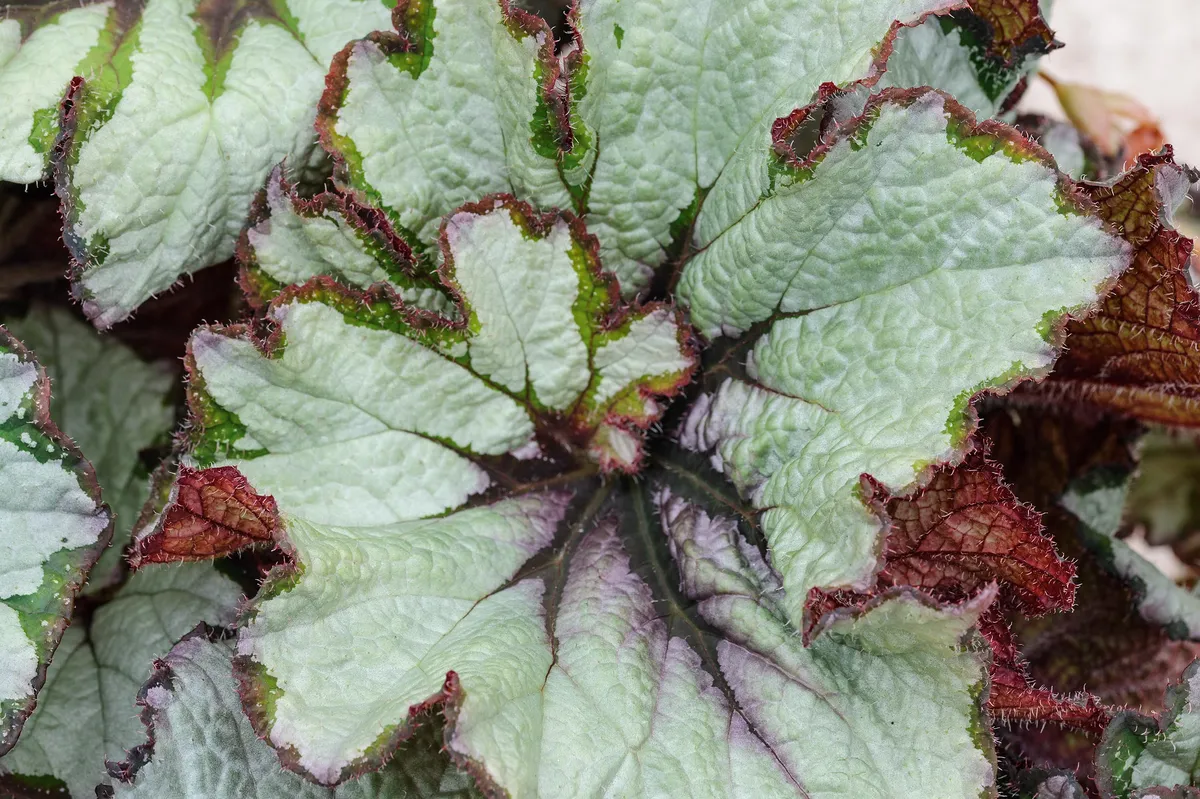
Reveals ever-increasing complexity the more you gaze at it. A compact, low-growing Begonia rex cultivar its creamy-green blotches enhance the captivating swirl of its leaves. 35cm. AGM. RHS H1B, USDA 10a-11.
Begonia ‘Ruby Celebration’

Clothed in Virginia-creeper red, it is great for offsetting container-grown flowers. The dark, mahogany veins and delicate blotches heighten its blazing effect. 40cm.
Begonia ‘Dark Eyes’
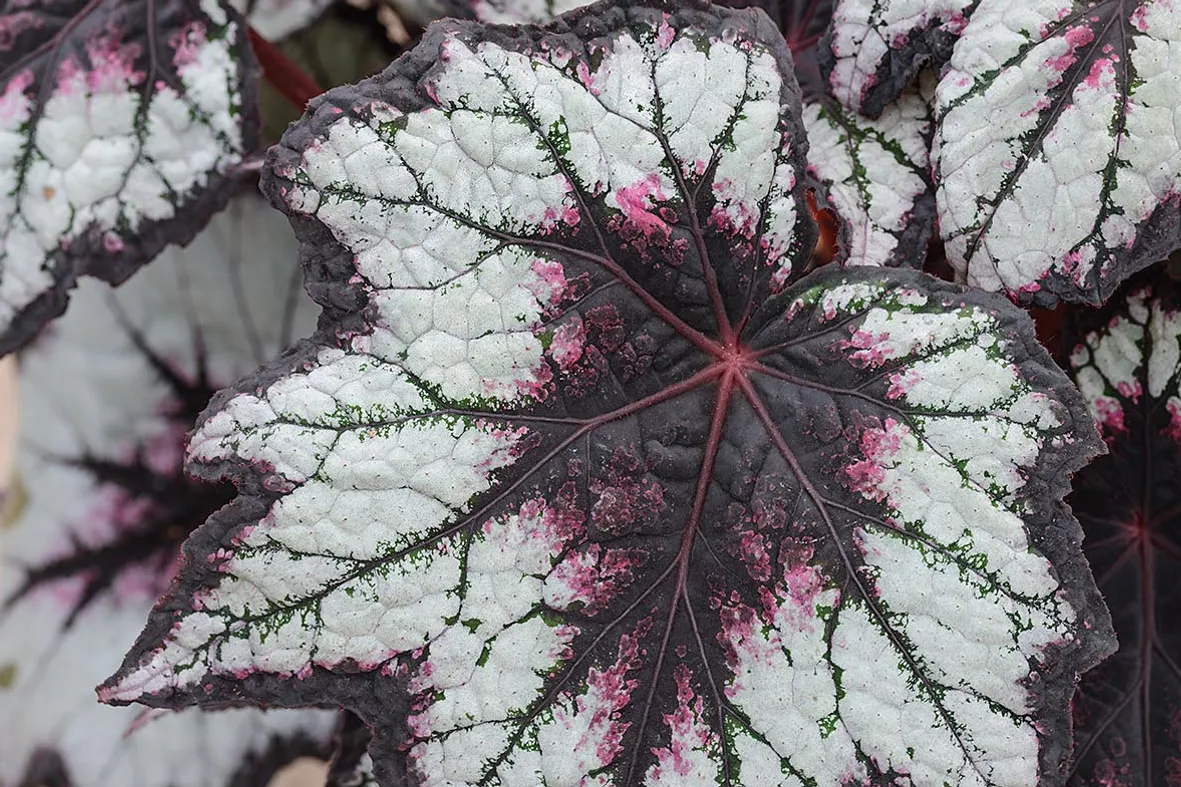
This is a great cultivar for creating impact. Its silver and crimson tones barely blend, offering a bi-coloured foliage that really stands out. A slightly larger, upright cane type. 50cm.
Begonia ‘Benitochiba’
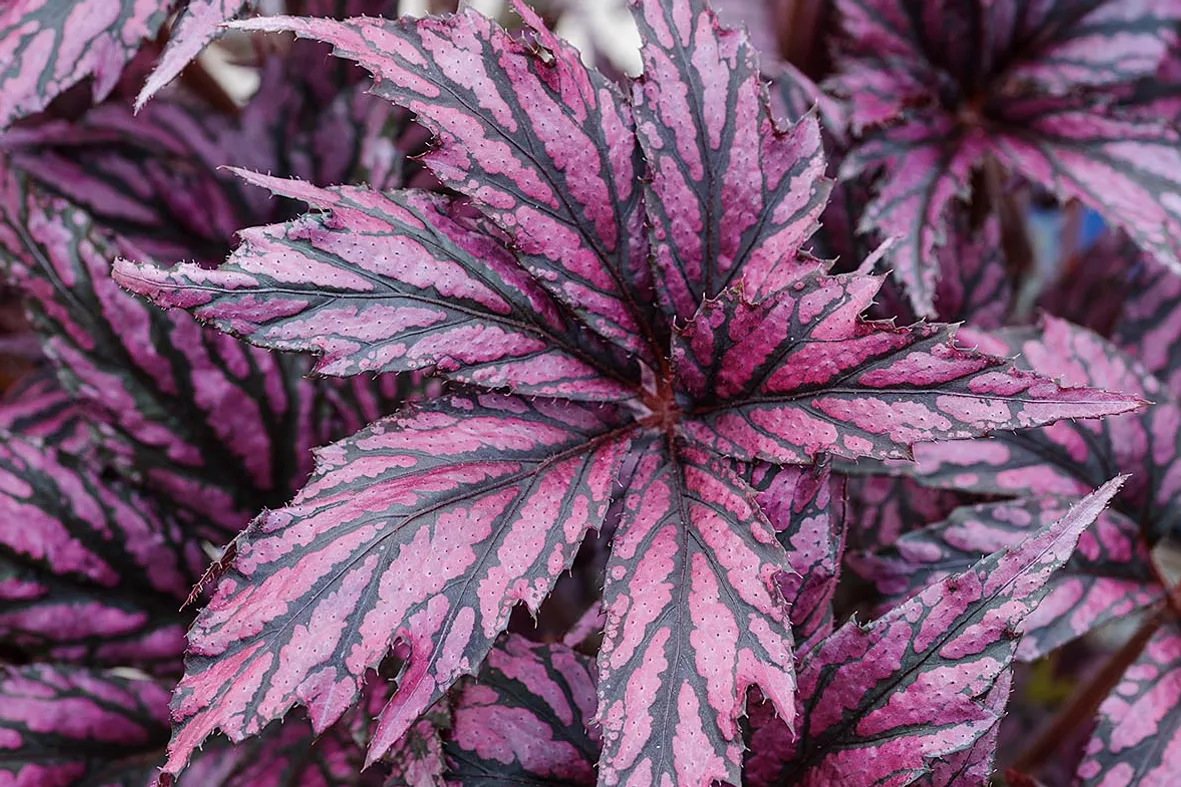
Its serrated leaflets spread from a dense shrubby structure. Young leaves are pink and become silver with age, while their veins soften from purple to forest green. 50cm. AGM. RHS H1B, USDA 10a-11.
Begonia ‘Joyful Blaze’

A tall and vigorous, rhizomatous Begonia rex cultivar. Beautifully dark, burgundy foliage with black veins develops quickly producing a good-sized plant within a single season. 35cm. RHS H1B, USDA 10a-11.
Begonia sutherlandii
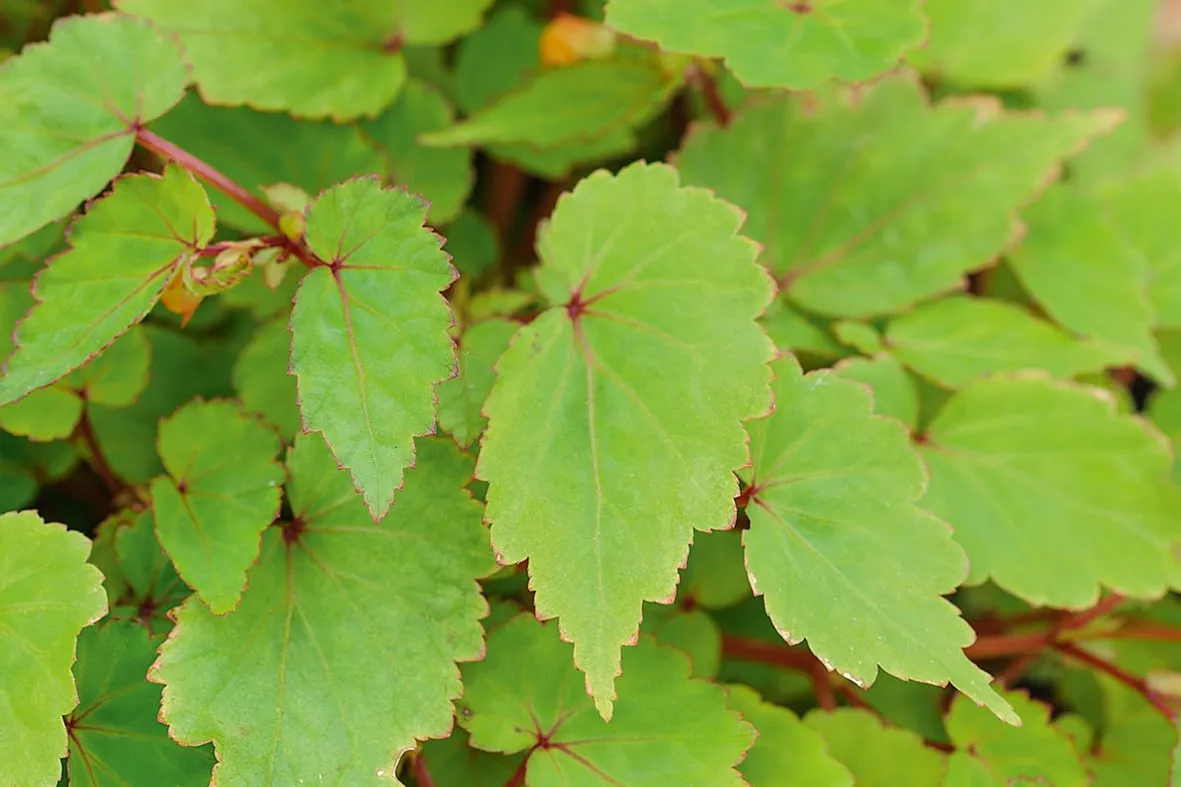
With abundant orange flowers that cascade in summer, this tuberous species is often associated with hanging baskets, but its cool-green leaves offer long-lasting tranquillity. 30cm. AGM. RHS H2.
Begonia ‘Scherzo’
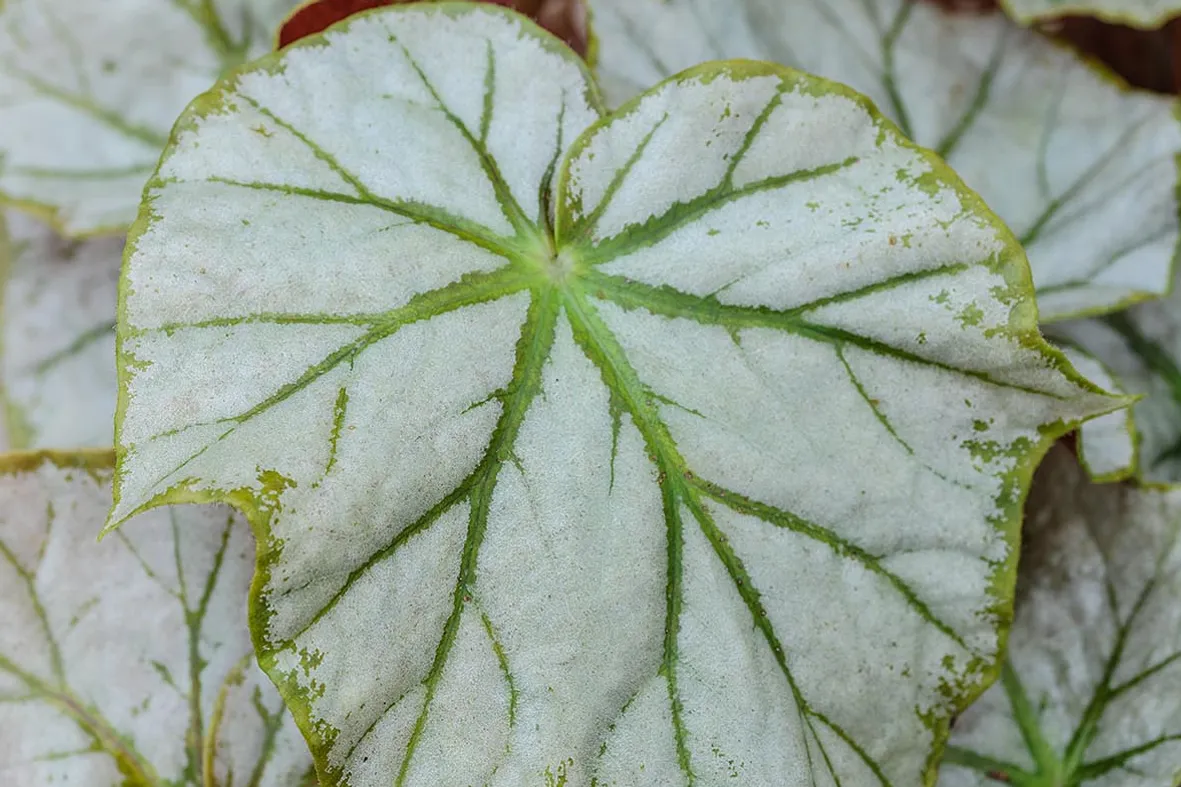
A rare and rhizomatous, mid-sized cultivar that is ideal for illuminating a semi-shaded spot. Its leaves appear almost sugar coated in an icy white broken only by the cracks of questing veins. 30cm.
Begonia hatacoa ‘Silver’
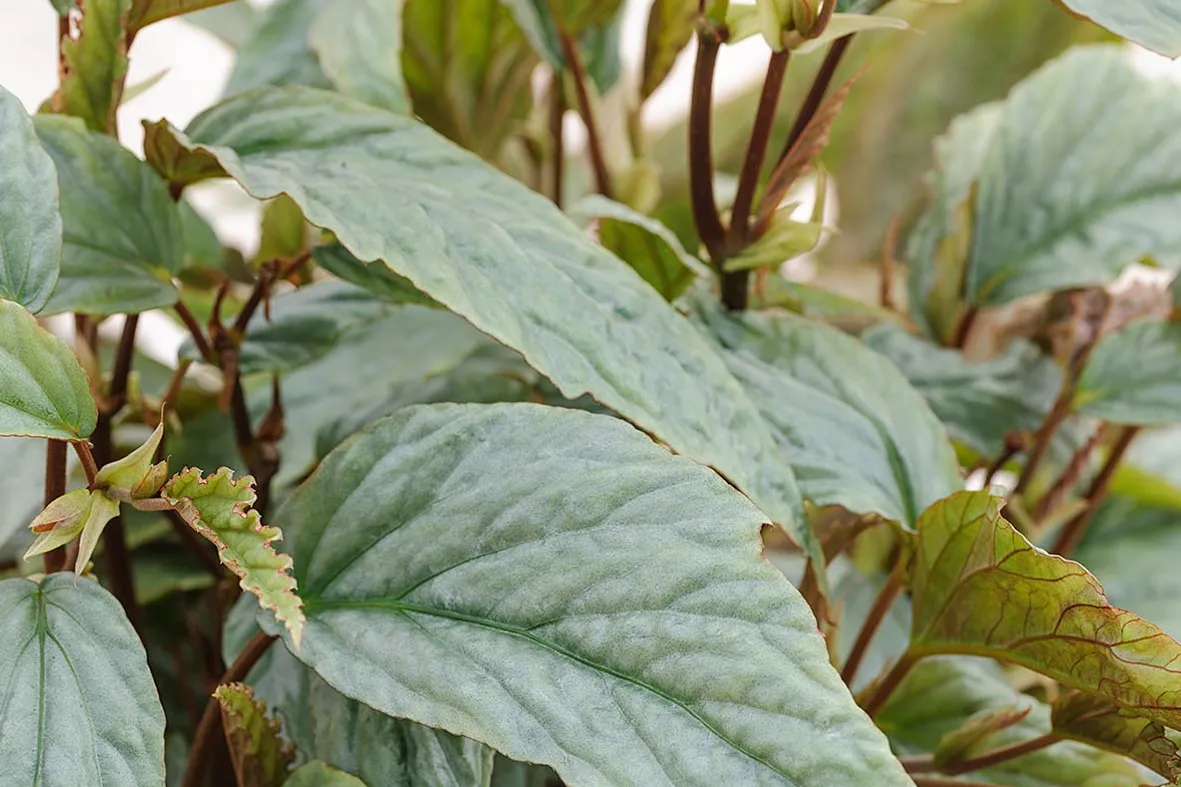
An unusual cultivar with a low-growing habit, producing wonderfully light, spear-shaped leaves that spread to 30cm. It is well suited to a bright room or summer terrace container. 60cm.
Begonia ‘Marmaduke’

The foliage of this small cultivar is distinctly hirsute and vibrantly mottled in green and orange, and glowing red underleaf. White flowers from February to May. 30cm. AGM. RHS H1B.
Begonia luxurians
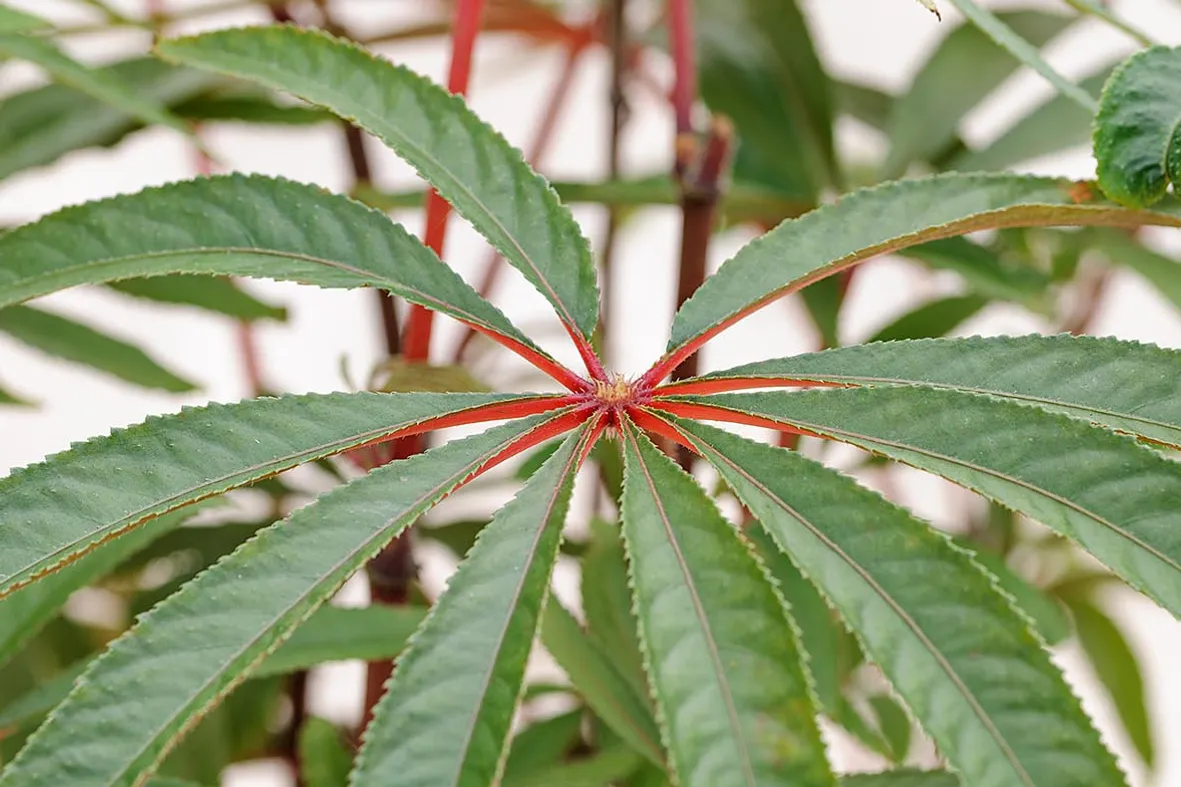
One of the best begonias for height, poise and tropical exuberance, it is a must-have species. Finely palmate leaves spread like a fan palm on cane stems. 1m. AGM. RHS H1B, USDA 10a-11.
Begonia ‘Curly Fireflush’

The accentuated leaf swirls make this a desirable cultivar. A complete covering of fine red hairs mute its colouration, emphasising instead its beautiful form. 40cm.
RHS H1B, USDA 10a-11.
Where to buy and see begonias
• Dibleys Nurseries, Llanelidan, Ruthin, Denbighshire LL15 2LG. Tel 01978 790677, dibleys.com
• Farmyard Nursery, Dol Llan Road, Llandysul, Carmarthenshire SA44 4RL. Tel 01559 363389, farmyardnurseries.co.uk
• Glasgow Botanic Gardens* 730 Great Western Road, Glasgow G12 0UE. Tel 0141 276 1640, glasgowbotanicgardens.com
• Great Dixter, Northiam, Rye. East Sussex N31 6PH. Tel 01797 252878, greatdixter.co.uk *National Collection holder
Matt Collins is a garden writer and head gardener at the Garden Museum in London.
Dibleys Nurseries Dibleys in North Wales, where these images were taken, is a multi RHS Gold Award-winning nursery that specialises in begonias and streptocarpus.
